Latest questions:
Trending questions:
Hot questions:
Virtual classes vs physical classes
Online classes, smart classes, and e-learning are changing the way the education system works. But do you think that these virtual classes are good for the overall growth of a student? Physical classrooms are better than virtual ? or should it be a combination?
13 answers
I think there has to be a combination. I agree real classrooms are more effective. However real classrooms are not possible sometime because of various reasons.
Virtual classrooms and now MOOC kind of things help you to learn things which were hard or expensive earlier.
Virtual Class is far more better than physical class however both styles have its own pitfalls
Consider what outcome measures are expected from the student. Can they be demonstrated virtually? Are they clinical in nature and must have direct supervision or coaching?
Having been a trainer online and in-person, there's no substitute for in-person engagement. There are exceptions for some people who learn better via video, for example, but distraction and discipline are key problems. If someone shows up for a class, I can see immediately who's paying attention and who's confused, plus it shows their commitment to show up in the first place. Not everyone has the time or money to attend in person, and motivated individuals should have opportunity to access the same instruction. .
The question has a flaw. Many who participate in traditional face-to-face classroom instruction do so choosing not to receive virtual classroom experiences, and many who participate in virtual and other mediated learning do so to avoid traditional classroom learning environments. Thus, the results of head to head comparisons involve self-selected learner populations who may in fact be quite different from one another in learning skills and abilities. Remote learning is its various manifestations requires greater discipline on the learner's part to persist and complete their learning aims, and therefore attracts learners who already possess those talents. A mixture perhaps appeals to a broaden range of learners and learning strategies but does not maximize organization of learning experiences. In the end, I believe research shows that it is the person-environment fit which best predicts success rather one instructional strategy being inherently superior for all learners.
Teaching has in general to functions, to communicate knowledge from the teacher to the student, but also to motivate the students to learn for themselves. At university the professor resumes the topics and the classes get used for interactive discussions. So the answer, it should be a combination. E-learning can enhance the overall learning experience.
If no other opportunity, e-learnings could be used for training of motivated students. For example to learn language. This could be done with a live-teacher, connected with camera.
A previous user has suggested that a physical classroom is real and that a virtual classroom is not real. This is absolutely not true. Education has changed a lot over the last 50 years now and new classroom educational initiatives have seen the physical classroom change so much. So, a typical 50 minute lecture where a professor talks to a group of students in a physical classroom is obsolete and no better than a poorly run online class. In fact, these types of lectures are often skipped by students and many if not mist student are asleep or on their phones after ten minutes. So a physical class of pure lecture is often the least effective way to teach (retention is at its lowest). However, a well designed online classroom that utilizes technology that get people taking and interacting (and teaching each other) can be MUCH more effective than a physical classroom. So, the point is...both can have their purpose and both can be wonderful for a student, if done carefully and planned and executed well. DO NOT ASSUME that a physical classroom is ALWAYS better than a virtual one, that is SIMPLY NOT TRUE. As mentioned by someone else in the comments, a blended approach is what is being considered all over the world.
It depends on the class. General Ed classes are fine as online instruction. If it's art or design then you need to have the assistance of an expert in the field, if you want to improve.
I believe that the education delivery model has changed significantly in the last 10 years. The meteoric rise in online universities outpaced the acceptance of the graduate's education, but that has changed. To substantiate my point- I can now enroll in MIT for elective and executive track courses, entirely online and with no requirement to step foot on the hallowed grounds of the university. An MIT executive MBA is arguably more attractive than a moderately sized state university MBA attended in person.
Further to the point that online education has now been fully accepted, it is entirely normal to have high school students attend class during normal hours and then return to an online hosted forum for a lab or additional discussion. These are part of the core curriculum and is expanding rapidly.
One can create examples where independent online study would be dangerous if accepted as equivalent to mentored and guided instruction. Doctors, surgeons, and may more. But there was no suggestion that there was a one or the other model. As with most things that include technology the value lies in the judicial use of both methods to achieve the greatest overall benefit meeting the needs of the market.
















